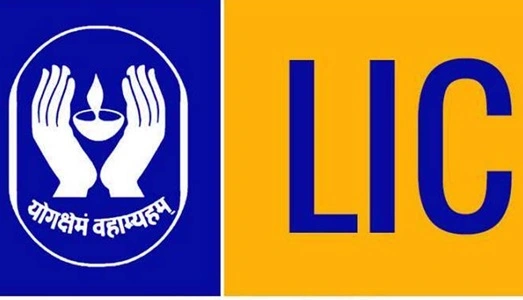The Life Insurance Corporation of India (LIC), established in 1956, is India’s largest and most trusted life insurance company. With a dominant market share, vast customer base, and deep-rooted brand equity, LIC has built a formidable reputation over the decades. However, in recent years, the insurance industry has undergone rapid transformation, fueled by regulatory changes, digitalization, increased competition, and shifting consumer preferences. LIC, now a publicly traded company after its IPO in 2022, faces both opportunities and challenges as it adapts to a dynamic environment. This SWOT (Strengths, Weaknesses, Opportunities, Threats) analysis provides insights into LIC’s current position and future outlook in the Indian insurance landscape.

Strengths
1. Strong Brand Equity and Consumer Trust:
LIC is synonymous with trust and reliability in India, with a legacy of over 65 years. LIC’s brand strength is unmatched in the Indian insurance industry, as generations of Indians have seen it as a safe and secure option for life insurance. This brand loyalty gives LIC a significant competitive advantage, making it the preferred choice among consumers for traditional life insurance policies.
2. Extensive Distribution Network and Reach:
LIC’s extensive distribution network spans over 2,000 branch offices, 1,500 satellite offices, and a massive agency network of over 1.3 million agents. This reach allows LIC to penetrate urban, semi-urban, and rural areas, covering virtually every corner of the country. The sheer size and reach of LIC’s distribution network have been instrumental in capturing a large share of India’s life insurance market, particularly among rural customers.
3. Dominant Market Share in Life Insurance Sector:
LIC holds the largest market share in India’s life insurance sector, capturing over 60% of the individual policies issued annually. Its established position enables LIC to generate substantial revenue, maintain cash flows, and secure a vast customer base. LIC’s dominant market share gives it a strong bargaining position, which is crucial when negotiating with partners, vendors, and regulatory bodies.
4. Financial Strength and Strong Investment Portfolio:
As a major institutional investor, LIC manages assets worth over ₹40 lakh crore (approximately $500 billion), making it one of the largest investors in the Indian financial markets. LIC’s investment portfolio, which includes equity, bonds, and government securities, provides it with financial stability and long-term growth. The returns generated from this portfolio strengthen LIC’s financial position, allowing it to fulfill policyholder obligations and make strategic investments.
Weaknesses
1. Heavy Reliance on Traditional Insurance Products:
Despite its dominance, LIC has been slower than private insurers in adapting to newer insurance products, such as Unit-Linked Insurance Plans (ULIPs), health insurance, and term insurance policies. This reliance on traditional endowment and savings-linked insurance products limits LIC’s ability to attract younger customers who seek products with investment potential or specialized coverage, such as critical illness insurance.
2. Outdated Operational Model and Limited Digital Adoption:
LIC’s operational model has traditionally been agent-driven, with limited digital presence. Although LIC has made strides in digitalization, it still lags behind private players in terms of online distribution, customer self-service, and digital claims processing. The lack of a seamless digital experience is a drawback, particularly when targeting tech-savvy millennials and Gen Z customers who prefer online transactions.
3. Regulatory Constraints and Bureaucratic Structure:
Being a state-owned entity, LIC is subject to government oversight and strict regulatory compliance, which can impact its agility and decision-making. Regulatory constraints, such as government mandates on rural outreach, subsidy schemes, and investment guidelines, limit LIC’s flexibility in adjusting business strategies. Additionally, LIC’s bureaucratic structure makes it challenging to respond quickly to market changes, adapt to new technologies, or implement innovative solutions.
4. High Cost Structure and Dependency on Agents:
LIC’s agency-based model, while effective for reach, is cost-intensive. The company’s high reliance on a large agent network increases operational costs, as agents earn commissions on policy sales. This dependence on agents can hinder LIC’s efforts to improve profitability, especially when compared to private players who are moving towards cost-efficient digital distribution channels.
Opportunities
1. Growth in Life Insurance Penetration in India:
India’s life insurance penetration rate is relatively low, with significant room for growth. Rising incomes, increasing financial literacy, and a growing middle class are driving demand for life insurance, particularly in underserved rural and semi-urban areas. LIC’s strong brand and extensive reach put it in a favorable position to capture this growing demand and increase penetration in underinsured regions.
2. Expansion of Digital Channels and Product Innovation:
Digital adoption in India is growing rapidly, and LIC has an opportunity to expand its digital footprint to attract younger customers and streamline operations. By investing in digital tools such as mobile apps, online portals, and AI-driven customer service, LIC can enhance customer experience and operational efficiency. Additionally, introducing innovative products, such as ULIPs, flexible-term policies, and customized health insurance plans, can attract tech-savvy and urban consumers.
3. Increasing Demand for Health Insurance and Pension Products:
The COVID-19 pandemic has increased awareness of health and life insurance, creating demand for comprehensive health insurance, critical illness cover, and pension products. LIC can capitalize on this trend by expanding its product portfolio to include comprehensive health and pension plans that cater to different life stages. Leveraging its brand and extensive reach, LIC can target this growing market segment effectively.
4. Investment in ESG and Sustainable Investment Portfolios:
Environmental, Social, and Governance (ESG) investing is gaining traction globally, with a growing preference for companies that align with sustainable practices. LIC, as a major institutional investor, has the opportunity to increase its investments in ESG-compliant assets. Doing so would not only diversify its portfolio but also align LIC with sustainable practices, improving its public image and attracting socially conscious customers.
Threats
1. Intense Competition from Private Insurers:
LIC faces intense competition from private life insurers, such as HDFC Life, ICICI Prudential, SBI Life, and Max Life, which have captured significant market share over the years. These private players have been more agile in adopting technology, offering digital solutions, and creating innovative products. This competition pressures LIC to enhance its offerings, improve customer service, and adopt new technologies to remain competitive.
2. Regulatory Changes and Increased Compliance Costs:
The insurance industry is heavily regulated, with guidelines on solvency margins, pricing, and product structure. Any regulatory changes, such as increased capital requirements, restrictions on investment options, or policy standardization, could impact LIC’s profitability and operational flexibility. Additionally, being a state-owned entity, LIC must also comply with government mandates, which can increase compliance costs and limit its strategic choices.
3. Economic Slowdowns and Impact on Premium Collection:
LIC’s performance is closely tied to economic cycles. In times of economic slowdown, job losses, and reduced disposable income can impact premium collection and policy renewals. Economic challenges, such as high inflation or recession, can reduce demand for life insurance products, impacting LIC’s revenue. Maintaining premium collections and renewals in a challenging economic environment requires targeted customer retention efforts and product innovation.
4. Shift in Consumer Preferences Towards Digital Solutions:
Consumer behavior is shifting, with a growing preference for digital solutions and online channels. Younger customers increasingly favor online insurance providers, digital platforms, and app-based policies, which offer greater flexibility and transparency. LIC’s traditional model and limited digital presence put it at a disadvantage in attracting and retaining these tech-savvy consumers. Failing to enhance its digital capabilities could cause LIC to lose market share to more digitally advanced insurers.
Future Outlook
The future outlook for LIC remains positive, as it is well-positioned to benefit from India’s rising insurance penetration and demand for financial security products. LIC’s strong brand, extensive distribution network, and large market share provide a solid foundation for sustained growth. The company’s recent IPO has also increased its access to capital, enabling it to make strategic investments, pursue digital initiatives, and expand its product offerings.
To capture emerging opportunities, LIC must embrace digital transformation. Expanding digital channels, creating user-friendly mobile apps, and investing in AI-driven customer service can enhance LIC’s appeal to tech-savvy customers and improve operational efficiency. Increasing its presence on digital platforms and investing in data analytics can also provide LIC with valuable insights into consumer behavior, enabling it to tailor products and services to meet changing preferences.
In the product landscape, LIC has the potential to diversify its offerings by focusing on high-demand segments like health insurance, retirement plans, and pension products. By offering customized policies and flexible terms, LIC can attract young, urban customers seeking financial security solutions that fit their lifestyles. Expanding its range of investment-linked and ESG-compliant products could also attract new-age investors who are increasingly focused on sustainability and social responsibility.
However, to sustain growth, LIC must address challenges such as high operating costs and competition from private players. Streamlining its operational model, reducing dependency on agents, and embracing digital distribution will be essential to improve profitability and retain market share. Additionally, proactive measures to comply with regulatory changes and align with consumer demands for digital convenience will help LIC maintain its competitive edge.
In conclusion, LIC’s strengths in brand trust, market reach, and financial stability position it well to capture growth in India’s evolving insurance sector. By focusing on digitalization, product diversification, and sustainable investment, LIC can adapt to changing industry dynamics and secure its position as India’s leading life insurance provider. With a strategic approach to innovation, efficiency, and customer satisfaction, LIC is well-prepared to navigate the challenges and capitalize on opportunities in the Indian insurance market.

